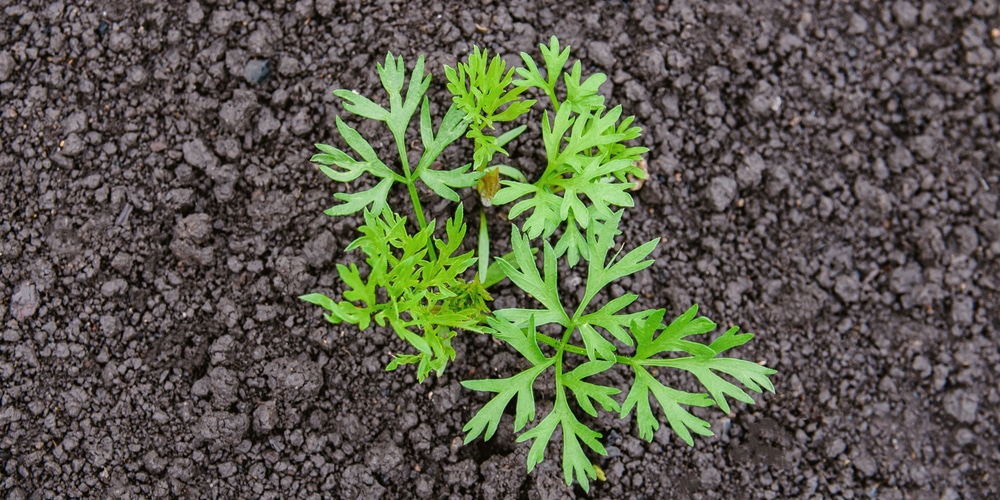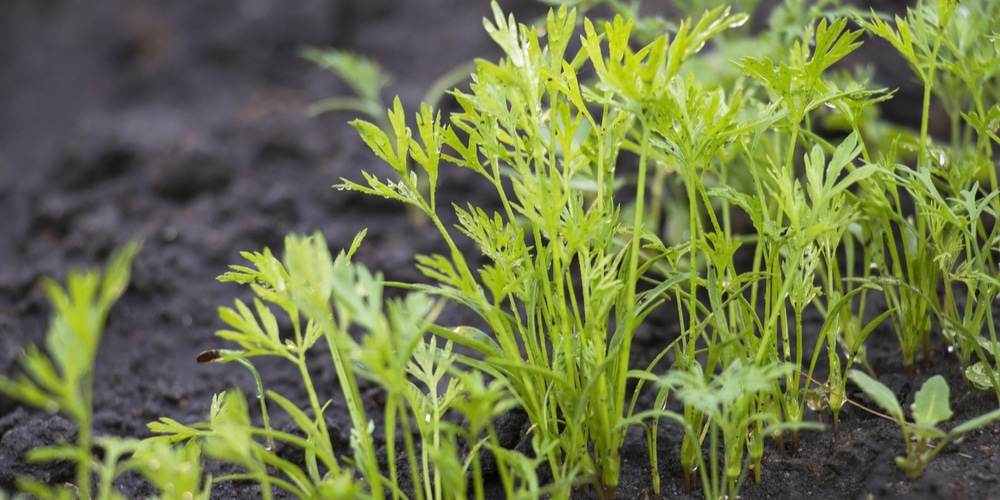Transplanting carrot seedlings is often considered irrelevant by many gardeners. However, there are times when it makes perfect sense, especially if you wish to have a good harvest. In many cases, transplanting carrot seedlings allows you to create optimal space for growth and ensure you are planting in soils with the right temperature and pH. Even better, transplanted carrots tend to grow larger compared to those that are only thinned.
If you are a new carrot gardener or are planning to transplant carrots for the first time, you might be wondering when is the right time to transplant carrot seedlings and how it is done. Keep reading this article to find out more about carrot seedlings.
When should you transplant carrots?

Typically, carrots are planted as seeds and thinned to allow them to grow with minimal competition and produce healthy tubers. In well-draining and fertile soils, carrots usually germinate well and in large quantities, especially if the seed were sown too close.
That said, while thinning carrots is a great way to ensure you get considerable yields from your plantings, you may want to transplant your carrots so that you get a return from every single seedling. In fact, many adventurous and prudent gardeners prefer transplanting such seedlings into a larger garden.
As for transplanting, the best time to transplant carrots is when they are about one to two weeks old. At this time, the seedlings are still adapting to the soil condition, and their roots are not yet fully established.
Most importantly, you want to transplant when the weather is relatively calm, preferably in the morning of a cloudy day just after there has been adequate rainfall in the past few days.
Generally, the early months of spring are suitable for transplanting carrots in USDA planting zones 2 through 11. During this time of the year, the soil is relatively wet and ideal for transplanting, which can support the carrots’ growth. Transplanting in moist soils helps reduce transplant shock that usually affects several transplanted plants.
How to transplant carrot seedlings
When transplanting carrots, a lot of care should be accorded to the fragile seedlings to ensure they do not get harmed or damaged. For a decent carrot harvest, here are a few steps you can follow whenever you want to transplant the carrot seedlings to a larger garden.
1. Prepare the soil
Till the soil to about nine inches deep using a garden fork or tiller, and use a spade to break any clumps of dirt. In case you find any rocks in the soil, remove them and add 2-3 inches of manure or any organic matter. The manure helps to loosen the soil because carrots only do well in fertile, loose, drained soils.
If the carrot variety you are transplanting has long roots of about 9 inches, you can comfortably transplant them in sandy soils. For short root varieties, you can plant them in rocky or clay soils but ensure there are few or no rocks in the topmost soils.
2. Make space to plant carrots
Dig a long trench with 3-4 inches width In the already prepared soil. It should be of the same depth as the soil depth of the transplant pots. Space the planting rows about 12- 18 inches apart.
3. Add fertilizer
Take about one or two tablespoons of phosphorus-based fertilizer and mix in a gallon of water. Pour the mixture into the trenches you had made on the tilled land where you are planning to plant the new seedlings. Cover the fertilized soil with ½ or 1 inch of soil
4. Take carrots out of the starter pots or seedling bed
Pour water into the carrot seedlings until the soil soaks completely. Watering before uprooting is crucial as it keeps you from damaging the tender seedlings. Uproot the carrot seedlings while ensuring the roots are not disturbed but remain intact with the soil.
5. Transplant the seedlings
Carefully place the seedlings in the dug trench while ensuring that the topsoil on the seedling is at the garden’s ground level. Space the seedlings about 2 inches apart for the larger varieties and 1 inch for the smaller varieties. Fill the trench with suitably amended soil before watering. After watering, add more soil to help the water settle and hold for quite a long time.
When to transplant carrot seedlings: Conclusion
Transplanting carrots can be a taxing garden assignment, but it is truly worth it if you wish to have a considerable harvest. Hopefully, you will find this article helpful in preparing to transplant the crowded carrot seedlings in your small garden.
Related Article: What Do Carrot Sprouts Look Like?

